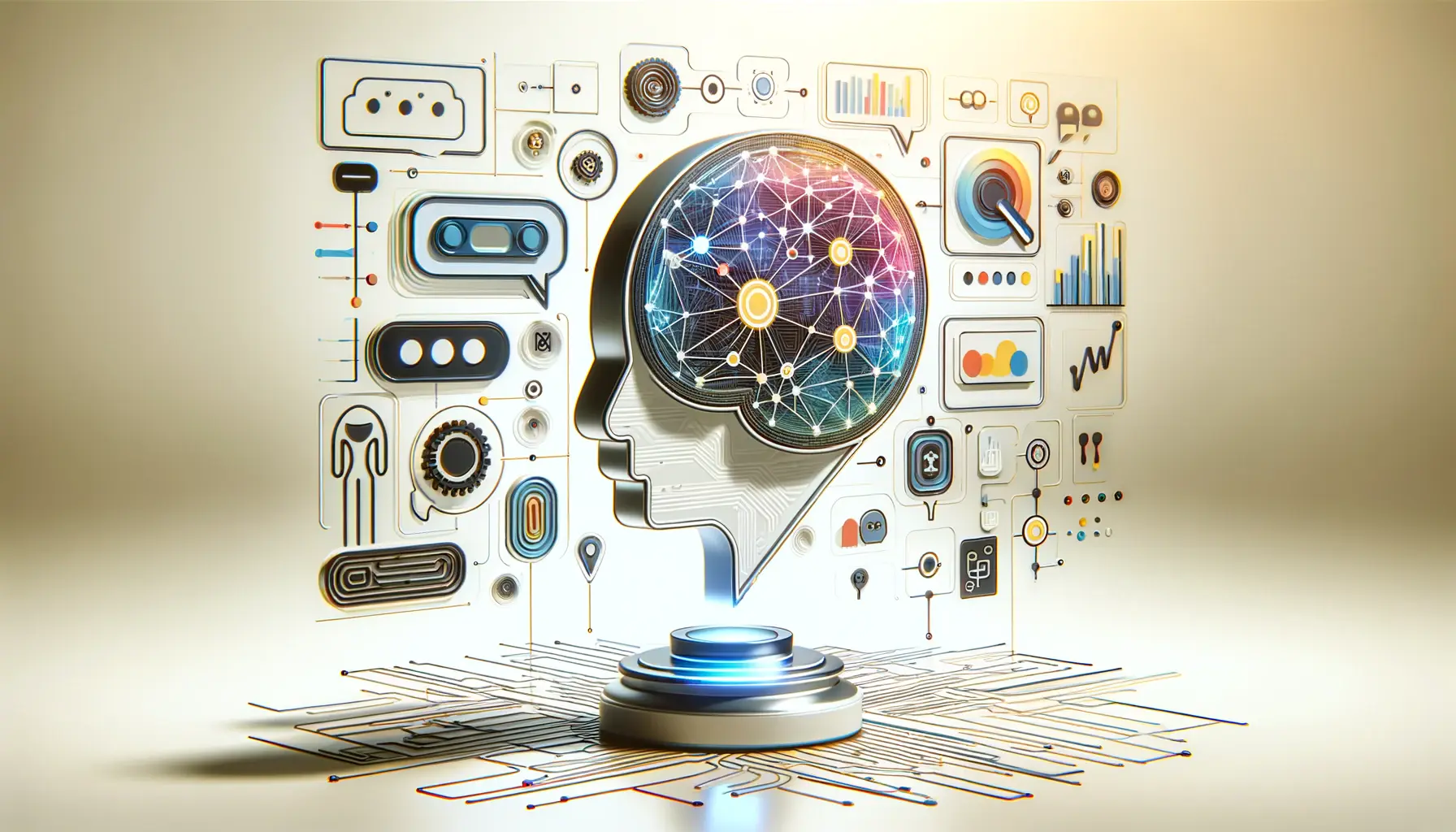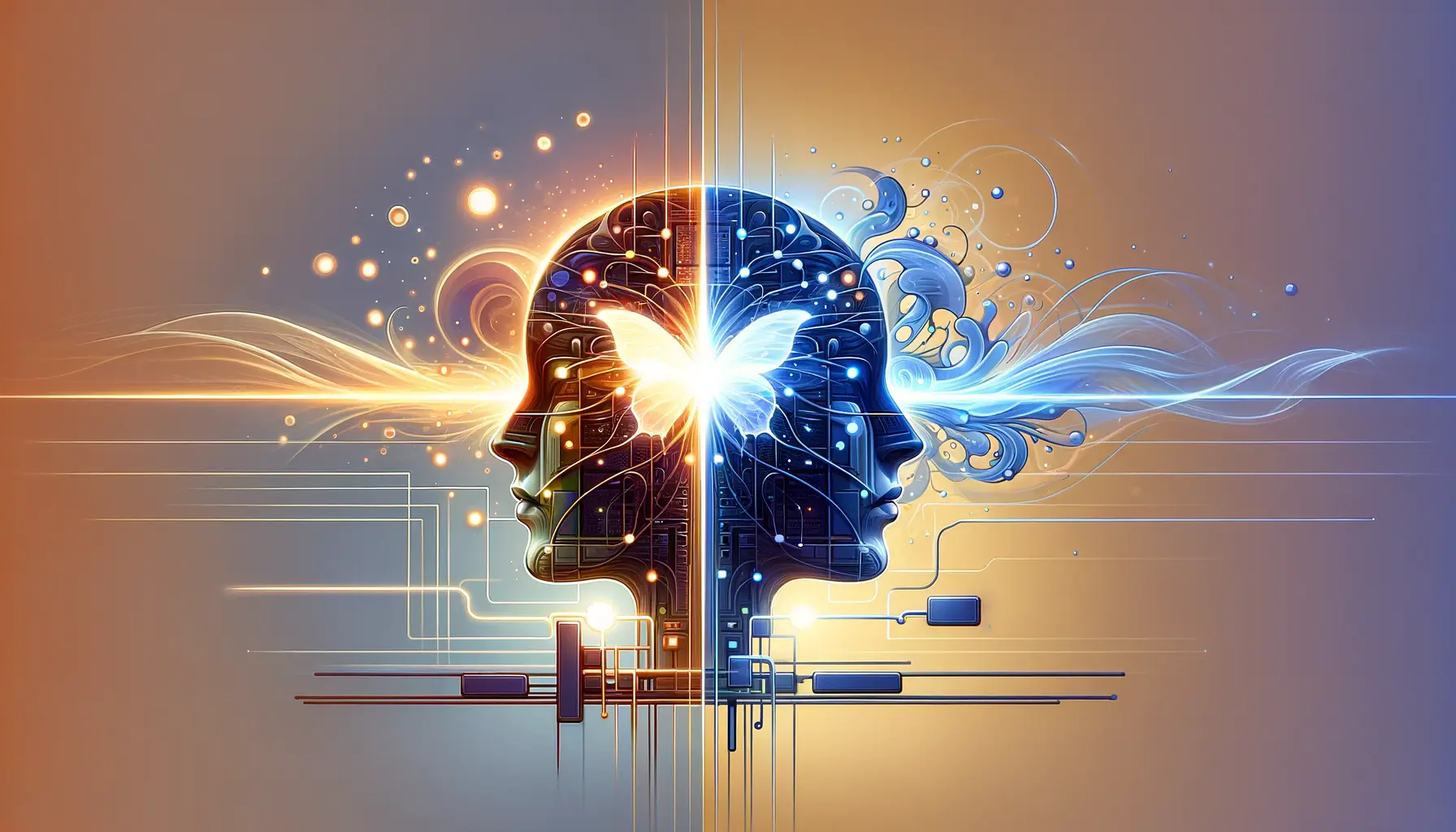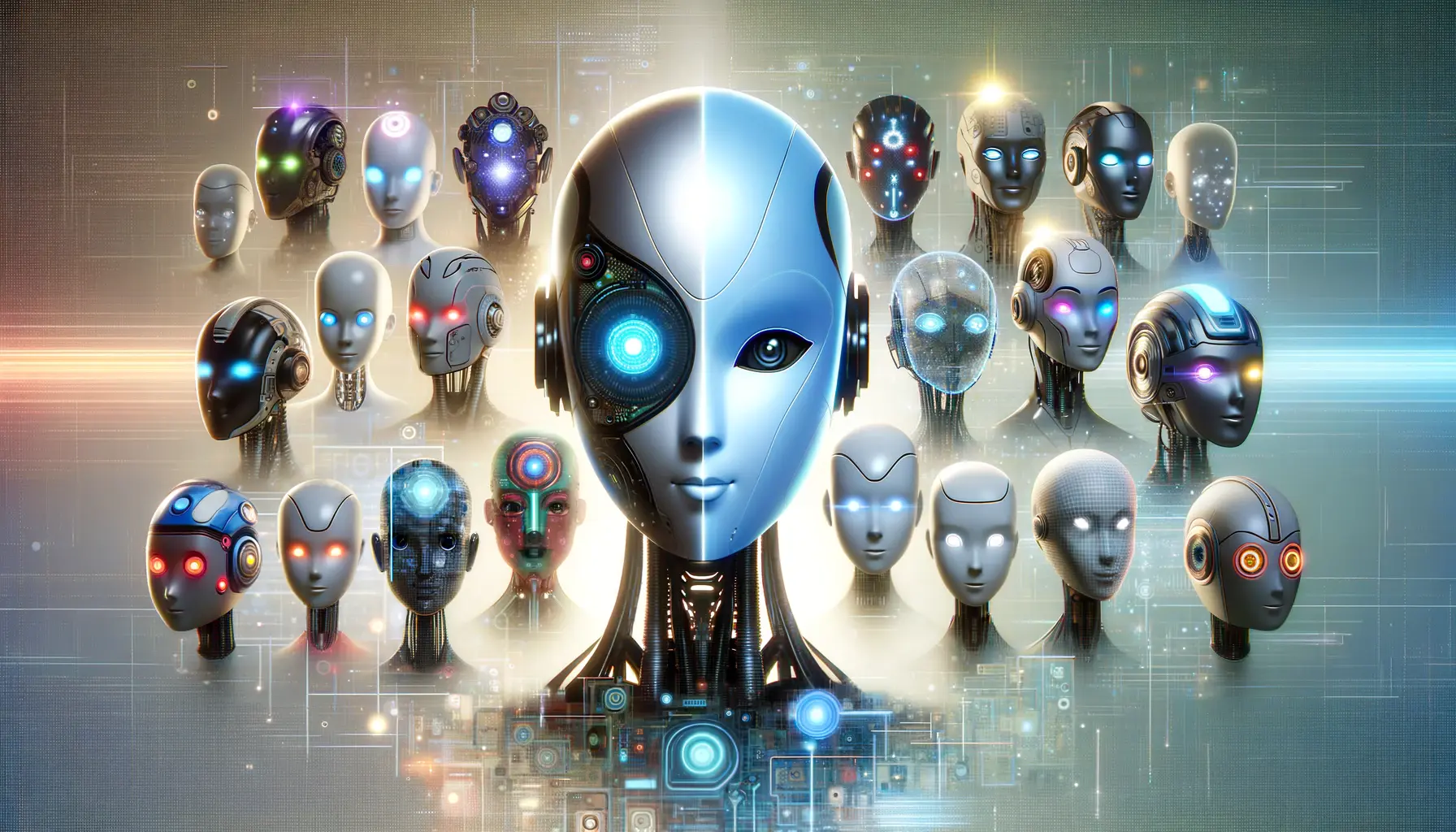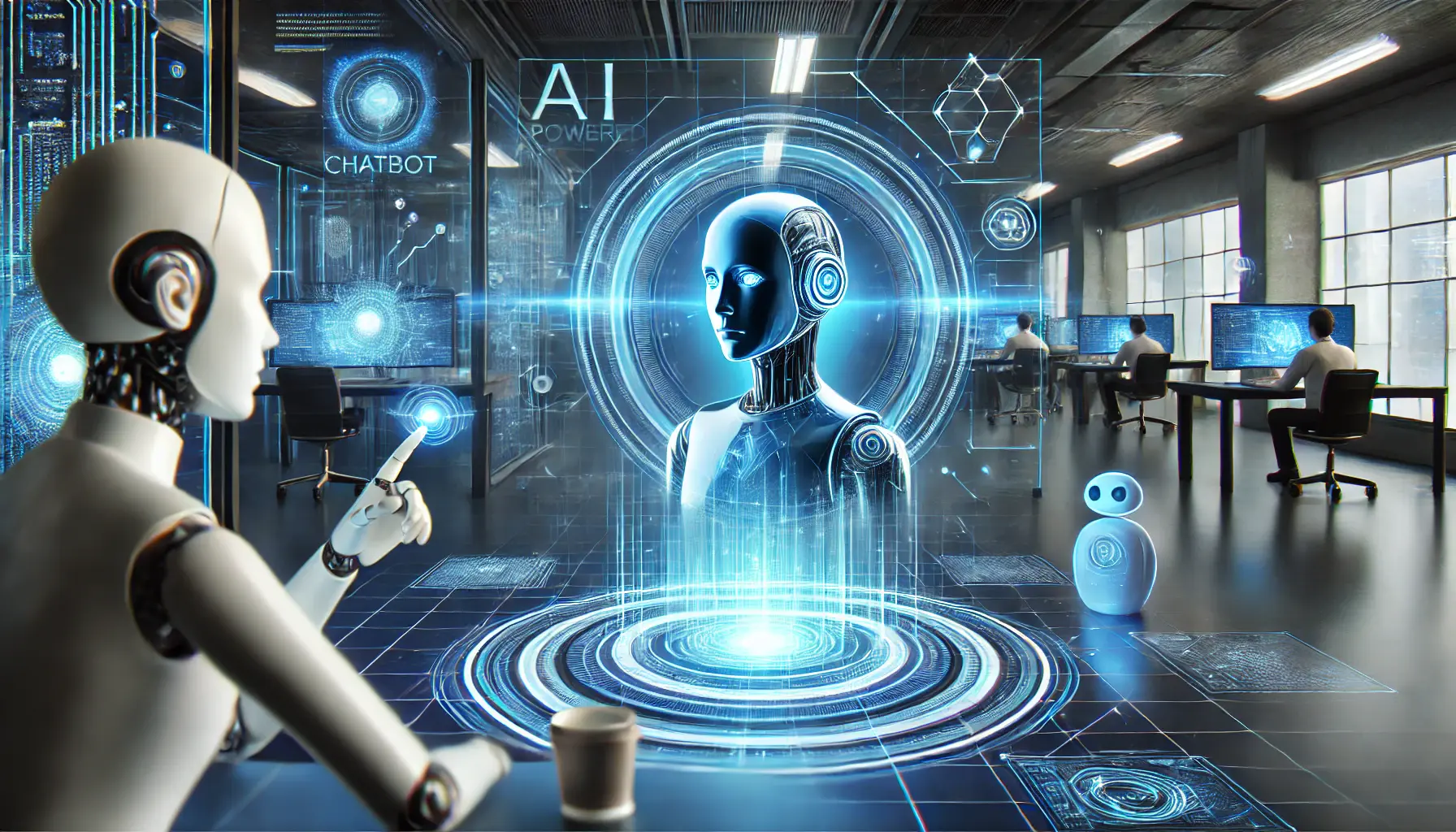The advent of artificial intelligence (AI) has ushered in a new era of technological innovation, fundamentally altering the way we interact with digital platforms.
At the forefront of this revolution is Google’s Bard, a cutting-edge AI chatbot designed to redefine conversational experiences.
This development not only showcases Google’s commitment to advancing AI technology but also sets a new benchmark for the future of digital communication.
Google’s Bard, powered by the tech giant’s pioneering AI research, represents a significant leap forward in making AI more accessible and intuitive for users worldwide.
By harnessing the power of advanced machine learning algorithms, Bard aims to provide responses that are not only accurate but also contextually relevant, offering insights and information in a conversational manner that mimics human interaction.
This breakthrough has the potential to transform various sectors, including customer service, education, and entertainment, by providing a more personalized and engaging user experience.
- Google’s Bard
- Applications and Impact of Bard in Various Sectors
- Challenges and Ethical Considerations
- Future Developments and Innovations
- Integrating Bard into Business Strategies
- Global Impact and Accessibility
- Adapting to the Evolving AI Landscape
- Embracing the Future with Google’s Bard
- FAQs on Google’s Bard: Insights and Capabilities
Google’s Bard
What Sets Bard Apart
Google’s Bard is not just another chatbot.
It is an embodiment of Google’s AI advancements, designed to understand and process natural language at an unprecedented level.
Unlike traditional chatbots that operate based on pre-defined responses, Bard leverages Google’s Language Model for Dialogue Applications (LaMDA), enabling it to generate responses that are both coherent and contextually relevant.
This capability allows Bard to engage in more meaningful conversations with users, making it a versatile tool for a wide range of applications.
The introduction of Bard marks a significant milestone in AI development.
It reflects Google’s vision for the future of AI chatbots, where technology serves as a bridge between complex information and the everyday user, simplifying access to knowledge and facilitating a more informed society.
Bard’s ability to draw on vast amounts of information from the web and present it in an easily digestible format is a game-changer, offering a glimpse into the future of how we will interact with digital information.
Google’s Bard leverages advanced AI to provide contextually relevant responses, setting a new standard for conversational AI.
The Technology Behind Bard
At the core of Bard’s effectiveness is Google’s LaMDA, a language model that represents the culmination of years of research and development in AI and natural language processing (NLP).
LaMDA’s design allows Bard to understand the nuances of human language, including idioms, colloquialisms, and complex questions, enabling it to respond in a way that feels natural and intuitive to users.
This level of sophistication in language understanding is what differentiates Bard from its predecessors and competitors.
Furthermore, Bard’s integration with Google’s vast search capabilities means it can access and synthesize information from across the web in real-time.
This ensures that the responses provided by Bard are not only relevant but also up-to-date, reflecting the latest developments and information available.
This feature is particularly valuable in fast-paced domains where timely information is crucial, such as news, finance, and health.
Applications and Impact of Bard in Various Sectors
The potential applications of Google’s Bard are vast and varied, touching upon numerous sectors that stand to benefit from enhanced AI-driven communication.
By providing precise, conversational responses, Bard can revolutionize industries by offering improved customer service, personalized education experiences, and innovative entertainment options.
Here, we delve into how Bard’s capabilities can be harnessed across different domains to create impactful changes.
Revolutionizing Customer Service
The integration of Bard into customer service can significantly enhance the quality and efficiency of support offered to customers.
By understanding and responding to queries in real-time, Bard can provide immediate assistance, reducing wait times and improving customer satisfaction.
This application is particularly beneficial for:
- Automated Support: Handling common queries instantly, allowing human agents to focus on more complex issues.
- Personalized Recommendations: Offering tailored advice based on customer preferences and past interactions.
Transforming Educational Experiences
Bard’s advanced understanding of natural language makes it an ideal tool for educational purposes, where it can be used to:
- Provide explanations of complex concepts in simple terms, making learning more accessible.
- Offer personalized tutoring, adapting to the individual learning pace and style of each student.
Innovating in Entertainment
In the entertainment sector, Bard’s ability to generate creative content can lead to new forms of storytelling and interactive experiences.
This includes:
- Interactive Storytelling: Creating dynamic narratives that adapt based on user choices.
- Game Development: Generating dialogues and scenarios for video games, enhancing the gaming experience.
Bard’s versatility across sectors underscores its potential to not only improve efficiency and personalization but also to introduce innovative solutions that redefine user engagement.
Enhancing Accessibility of Information
One of Bard’s most significant impacts lies in its ability to make information more accessible to a broader audience.
By simplifying complex data and providing explanations in conversational language, Bard can help bridge the knowledge gap, enabling users to:
- Gain insights into topics they are unfamiliar with, without the need for extensive research.
- Receive concise summaries of extensive articles or reports, saving time and effort.
Challenges and Ethical Considerations
While the advancements and applications of Google’s Bard herald a new era of AI interaction, they also bring to light several challenges and ethical considerations.
As we navigate through the integration of such sophisticated AI technologies into our daily lives, it becomes imperative to address these concerns head-on.
This ensures that the development and deployment of AI chatbots like Bard are conducted responsibly, prioritizing user safety and data privacy.
Addressing Data Privacy and Security
The use of AI chatbots like Bard raises significant data privacy and security questions.
Given Bard’s access to vast amounts of information and its ability to process personal data, ensuring the protection of user information is paramount.
Key measures include:
- Implementing robust data encryption and anonymization techniques to safeguard user information.
- Adhering to stringent data protection regulations to prevent unauthorized access and data breaches.
Combating Misinformation and Bias
Another critical challenge is the potential for AI chatbots to propagate misinformation and exhibit bias.
Bard’s reliance on the web for information can inadvertently lead to the dissemination of inaccurate or biased content.
To mitigate these risks, it is essential to:
- Continuously monitor and update the AI’s training data to ensure accuracy and neutrality.
- Implement filters and verification processes to identify and correct biased or false information.
Ensuring Ethical AI Development
The ethical development and deployment of AI technologies like Bard require a concerted effort from all stakeholders involved.
This includes:
- Developing AI in accordance with ethical guidelines that prioritize human welfare and rights.
- Engaging with diverse groups to understand the societal impact of AI and incorporate diverse perspectives into AI development.
Addressing these challenges and ethical considerations is crucial for the responsible advancement of AI technologies, ensuring they serve the greater good while minimizing potential harms.
Future Developments and Innovations
The trajectory of AI chatbots, particularly Google’s Bard, is on an upward curve, with future developments poised to further revolutionize the landscape of digital interaction.
As AI technology continues to evolve, we can anticipate a series of innovations that will expand Bard’s capabilities, making it even more integral to our digital lives.
These future developments are not just limited to enhancing existing features but also introducing new functionalities that could redefine the boundaries of what AI chatbots can achieve.
Advancements in Natural Language Understanding
One of the key areas of focus for future development is the enhancement of Bard’s natural language understanding (NLU) capabilities.
This involves:
- Deepening the AI’s comprehension of context, sarcasm, and nuanced human emotions to provide more empathetic and accurate responses.
- Expanding linguistic diversity to include a broader range of languages and dialects, making Bard accessible to a wider global audience.
Integration with IoT and Smart Devices
The integration of Bard with the Internet of Things (IoT) and smart devices represents a significant frontier for innovation.
This could enable:
- Seamless interaction between Bard and smart home devices, allowing for more intuitive control and automation of home environments.
- Personalized AI assistance on the go, with Bard offering real-time information and support through wearable technology and mobile devices.
Enhancing Creative Content Generation
Bard’s potential for creative content generation is another area ripe for development.
Future innovations could see Bard:
- Collaborating with artists and creators to produce unique art, music, and literature, pushing the boundaries of creativity.
- Offering dynamic storytelling and content creation tools for marketers and content creators, enabling the production of highly engaging and personalized content.
The future of Bard and AI chatbots lies in their ability to become more integrated into our daily routines, offering personalized and intuitive assistance that transcends traditional digital interactions.
Integrating Bard into Business Strategies
The integration of Google’s Bard into business strategies presents a unique opportunity for companies to leverage AI for competitive advantage.
As Bard continues to evolve, its applications in enhancing customer experiences, streamlining operations, and driving innovation become increasingly apparent.
Businesses that recognize and harness Bard’s potential can transform their operations, offering superior services while optimizing efficiency.
Personalizing Customer Interactions
One of the most immediate applications of Bard in business is the personalization of customer interactions.
By utilizing Bard’s advanced language processing capabilities, businesses can:
- Deliver tailored recommendations and advice to customers, enhancing the shopping experience.
- Automate customer service inquiries, providing quick and accurate responses to frequently asked questions.
Streamlining Content Creation
Bard’s ability to generate creative content can significantly streamline the content creation process for marketing and communication strategies.
This includes:
- Automating the production of engaging and relevant content for social media, blogs, and advertising campaigns.
- Enhancing brand storytelling with unique narratives and concepts developed in collaboration with Bard.
Optimizing Operational Efficiency
Beyond customer-facing applications, Bard can also contribute to operational efficiency within organizations.
Its applications include:
- Automating routine tasks and reports, freeing up human resources for more strategic activities.
- Providing real-time data analysis and insights, aiding in decision-making processes.
Incorporating Bard into business strategies not only enhances customer engagement and operational efficiency but also positions companies at the forefront of technological innovation, ready to adapt to the evolving digital landscape.
Global Impact and Accessibility
The global impact of Google’s Bard and similar AI chatbots extends far beyond individual convenience and business efficiency.
As these technologies become more sophisticated and widely adopted, they have the potential to significantly influence various aspects of society, including education, healthcare, and access to information.
Moreover, the emphasis on making AI like Bard accessible to diverse populations worldwide is crucial in ensuring that the benefits of AI advancements are equitably distributed.
Breaking Language Barriers
Bard’s capabilities in understanding and generating multiple languages play a pivotal role in breaking down language barriers.
This democratizes access to information, allowing people from different linguistic backgrounds to:
- Access a vast array of knowledge and services in their native languages.
- Facilitate cross-cultural communication and understanding by providing accurate translations and interpretations.
Enhancing Educational Resources
The integration of AI chatbots like Bard into educational systems can transform learning experiences, making education more accessible and personalized.
This includes:
- Providing students with instant access to information and tutoring, thereby supplementing traditional education methods.
- Offering customized learning pathways that adapt to the individual learner’s pace and style, making education more inclusive.
Improving Healthcare Delivery
In the healthcare sector, Bard’s application can lead to improved patient care and health outcomes.
Its potential includes:
- Assisting medical professionals by providing quick access to medical information and literature, supporting diagnosis and treatment planning.
- Enhancing patient engagement and self-care through personalized health information and reminders.
The global impact of Bard underscores the transformative potential of AI to address societal challenges, making critical services and information more accessible and inclusive.
Adapting to the Evolving AI Landscape
The landscape of artificial intelligence is in a constant state of flux, with new advancements and applications emerging at a rapid pace.
For individuals and organizations alike, staying abreast of these changes and adapting to the evolving AI landscape is crucial.
Google’s Bard, with its cutting-edge capabilities, represents just one facet of this ever-changing domain.
As AI continues to permeate various sectors, understanding its potential and limitations becomes essential for leveraging its benefits while mitigating risks.
Continuous Learning and Development
To effectively adapt to the evolving AI landscape, continuous learning and development are imperative.
This involves:
- Keeping informed about the latest AI research and developments to understand new capabilities and applications.
- Investing in AI literacy and skills development, ensuring that individuals and teams can effectively utilize AI tools like Bard.
Strategic Implementation and Integration
Strategically implementing and integrating AI technologies into processes and systems is key to maximizing their potential.
For businesses, this means:
- Assessing current operations to identify areas where AI can add value or enhance efficiency.
- Developing a roadmap for AI adoption that aligns with organizational goals and customer needs, ensuring a smooth integration process.
Addressing Ethical and Societal Implications
As AI becomes more ingrained in our lives, addressing its ethical and societal implications is crucial.
This includes:
- Engaging in discussions about the ethical use of AI, including privacy concerns, bias, and accountability.
- Collaborating with policymakers, researchers, and industry leaders to develop guidelines and frameworks that ensure the responsible development and use of AI.
Ignoring the rapid advancements in AI technology can lead to missed opportunities and potential risks, underscoring the importance of proactive adaptation and ethical consideration.
Embracing the Future with Google’s Bard
The journey through the evolving landscape of AI chatbots, particularly with the advent of Google’s Bard, illuminates a path toward a future where technology and human interaction converge in unprecedented ways.
As we stand on the brink of this new era, the potential of Bard to transform industries, enhance global accessibility, and reshape our daily lives is both immense and inspiring.
The insights gleaned from exploring Bard’s capabilities, challenges, and future prospects offer a comprehensive understanding of its role in driving forward the AI revolution.
The Path Forward
As we navigate the complexities and opportunities presented by AI chatbots like Google’s Bard, several key strategies emerge for individuals and organizations alike:
- Investing in AI education and skills development to harness the full potential of these technologies.
- Implementing AI solutions strategically to enhance operational efficiency and customer engagement.
- Engaging in ethical considerations and dialogue to ensure the responsible development and use of AI.
Conclusion
The future of AI chatbots, epitomized by Google’s Bard, offers a vista of opportunities that span across enhancing personal and professional lives, breaking down barriers to information access, and fostering global connections.
As Bard continues to evolve, its integration into various sectors promises not only to streamline operations but also to enrich the human experience with more personalized and intuitive interactions.
The key to unlocking this potential lies in our collective ability to adapt, learn, and ethically integrate these advancements into our societal fabric.
In doing so, we not only embrace the future of AI but also shape it to reflect our shared values and aspirations.
FAQs on Google’s Bard: Insights and Capabilities
Explore commonly asked questions about Google’s Bard, its functionalities, and how it’s shaping the future of AI chatbots.
Bard is Google’s AI chatbot designed to interact conversationally, offering information retrieval and content generation based on LaMDA technology.
Bard utilizes advanced AI, specifically LaMDA, to understand and generate human-like text responses, drawing from vast web resources.
Bard can summarize content, generate new text, provide information, and assist with brainstorming, making digital interactions more intuitive.
Initially, Bard is available to users in the U.S. and U.K., with plans to expand access globally as the platform evolves.
Bard and ChatGPT are both AI chatbots, but Bard leverages Google’s search capabilities for real-time information retrieval and content generation.
Yes, Bard is capable of generating creative content, including text and ideas for various applications, enhancing creativity and productivity.
Google emphasizes Bard’s adherence to strict data privacy and security protocols, ensuring user information is protected and confidential.
The future of Bard includes expanding its language capabilities, enhancing its understanding of complex queries, and broader global accessibility.













